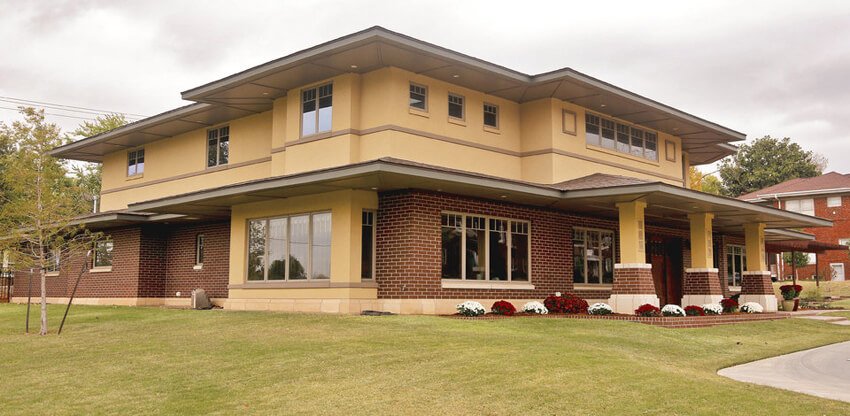#11977. Prairie Style Façade: Horizontal Lines and Organic Harmony
Before us is an impressive example of a Prairie style house, an architectural direction developed by Frank Lloyd Wright in the early 20th century. This two-story structure demonstrates characteristic features of this style: a horizontal composition, protruding eaves of a wide flat roof, creating a sense of protection and connection with the ground.
The façade presents a harmonious combination of materials — the lower part is made of red brick, while the upper floor is finished in sandy-yellow tones. This separation visually balances the structure and emphasizes its horizontal orientation. Wide windows with characteristic divisions into multiple small sections form a rhythmic pattern and provide abundant natural lighting to the interior spaces.
Of particular note is the spacious porch with massive columns, which serves as a transitional zone between interior and exterior spaces. This architectural technique creates a welcoming entrance and reflects the philosophy of organic architecture, where the building naturally blends into the surrounding landscape.
When designing your own façade, you can adopt several techniques from this example: combining contrasting materials to create visual interest, using wide roof overhangs for protection from precipitation and sun, thoughtful placement of windows for maximum natural lighting, and creating an organic connection between the house and the adjacent territory through transitional spaces such as porches or terraces.
